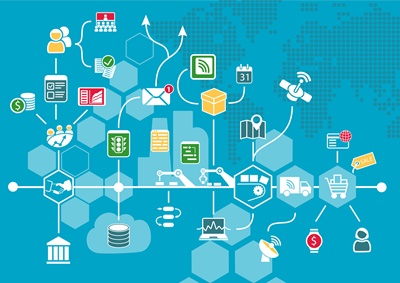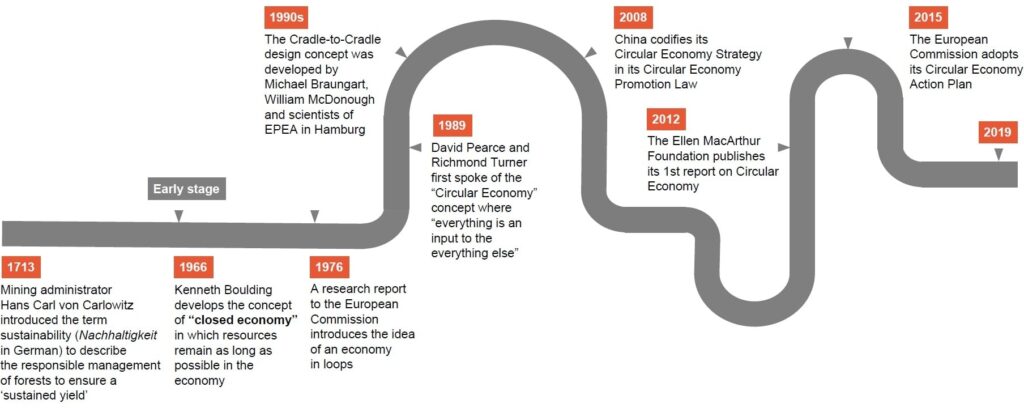Article by: Asst.Prof. Suwan Juntiwasarakij, Ph.D., MEGA Tech Senior Editor
ไม่ต้องสงสัยเลยว่าแนวคิดเศรษฐกิจแพลตฟอร์มทำให้ชีวิตง่ายขึ้น ทั้งการระดมทุนสาธารณะและการกู้ยืมระหว่างบุคคล ทำให้นักลงทุนเชื่อมต่อเข้าถึงผู้ที่ต้องการเงินทุนได้โดยตรง สื่อกลางการซื้อขายหรือตลาดแบบดิจิทัลตามความต้องการได้คืนอำนาจให้แก่ผู้ซื้อ ผู้ขาย และผู้เช่า เศรษฐกิจแบ่งปันและระบบนิเวศน์ดิจิทัลได้มอบการเข้าถึงโอกาสสารสนเทศข่าวสาร และตัวเลือกแก่ผู้บริโภคในแบบที่ไม่เคยเป็นมาก่อน
Business model of the sharing economy

แก่นของระบบเศรษฐกิจแพลตฟอร์มมิใช่อื่นใด แต่เป็นเจตนารมณ์อันแรงกล้าที่จะปลดแอกเพื่อกระจายอำนาจทางเศรษฐกิจ ให้ทุกคนได้มีอิสรภาพและความยืดหยุ่นทางการเงินให้มากขึ้น อย่างไรก็ดีแพลตฟอร์มดิจิทัลยังได้ปลดแอกการบริโภคอีกด้วย เศรษฐกิจแบ่งปัน 2.0 ได้กำจัดภาวะการถือครองสินทรัพย์แต่เพียงผู้เดียวที่เรียกกันว่า “ความเป็นเจ้าของ” การขับเคลื่อนวิวัฒนาการทางเศรษฐศาสตร์ในลักษณะเช่นนี้ จะตกเป็นคนยุคต่อไป “ยุคก้าวข้ามการครอบครอง/การเป็นเจ้าของ” ยุคที่ผู้คนมุ่งสะสมทรัพย์สินและสิ่งของ แต่ต้องการเติบโตจากการได้ทำงานร่วมกันและแบ่งปันที่อยู่อาศัย ซึ่งกิจกรรมเหล่านี้ได้กลายเป็นเรื่องปกติสำหรับพวกเขาไปแล้ว
Outline of a circular economy

ระบบเศรษฐกิจวงกลมที่กำลังจะทำเสนอต่อไปนี้ ไม่ใช่แนวคิดใหม่แต่อย่างใด การเคลื่อนไหวของแนวคิดนี้ปรากฏให้เห็นครั้งแรกในช่วงทศวรรษที่ 70 ในจักรวาลของเศรษฐกิจวงกลม วัตถุดิบต่างๆ ล้วนมาจากกระบวนการรีไซเคิล ส่วนพลังงานนั้นมาจากแหล่งพลังงานทดแทน ระบบเศรษฐกิจวงกลมจึงเป็นโมเดลระบบเศรษฐศาสตร์ทางเลือกที่ได้ปลดปล่อยกิจกรรมทางเศรษฐกิจ ออกจากการบริโภคทรัพยากรที่มีอยู่อย่างจำกัดนั่นเอง
The movement and the concept of a circular economy

โมเดล “วงกลม” ที่พูดถึงอยู่นี้หมายถึงการใช้ทรัพยากรอย่างมีประสิทธิภาพ และการให้ความสำคัญกับการนำกลับมาใช้ใหม่หรืออายุการใช้งานของวัตถุสินค้า ทั้งนี้ เพื่อสกัดคุณค่าประโยชน์ใช้สอยออกมาให้ได้มากที่สุด ทั้งนี้ รวมถึงการนำวัตถุพลอยได้จากกระบวนการบริโภคหรือของเสียกลับมาใช้ใหม่เป็นวัตถุดิบป้อนเข้าสู่กระบวนการผลิตต่อไป ระบบเศรษฐกิจวงกลมจึงหมายถึงการบริหารจัดการการไหลของกระบวนการนำทรัพยากรที่มีอยู่จำกัดกลับมาใช้ใหม่อย่างมีความรับผิดชอบ
Ten types of innovation framework

Digital circular economy framework

จากผลการศึกษาของดีลอยต์ พบว่ามีความสัมพันธ์เชื่อมโยงอันชัดเจนระหว่างเทรนด์การก้าวเข้าสู่ความเป็นดิจิทัลและระบบเศรษฐกิจแบบวงกลม นั่นคือ ระบบดิจิทัลสามารถช่วยขับเคลื่อนไปสู่การประกอบธุรกิจแบบวงกลมได้หลากหลายวิธีการ ทั้งนี้ ก็เพราะระบบดิจิทัลนั่นแหละที่เป็นตัวช่วยให้เกิดนวัติกรรมระบบเศรษฐกิจแบบวงกลม นวัตกรรมต่างๆ ที่ผุดขึ้นมารอบระบบเศรษฐกิจแบบวงกลมอาจดูเหมือนไม่ค่อยมีทิศทางหรือไม่ค่อยตอบโจทย์กลยุทธ์เท่าใดนักเมื่อเทียบกับนวัตกรรมดิจิทัล ทั้งนี้ ก็เพราะไม่สามารถขยายผลให้กว้างขวางขึ้นได้อีก ทั้งยังไม่ได้เกิดการแปรรูปทางที่ชัดเจน อีกประการหนี่ง นวัตกรรมขนาดใหญ่จะเกิดขึ้นได้นั้น ต้องเกิดการเปลี่ยนแปลงอย่างรุนแรงต่อโมเดลทางธุรกิจ เช่น เปลี่ยนจากการขายสินค้ามาเป็นการขายการให้บริการ
Worldwide adoption of circular economy

ในระหว่างนี้เองที่หน่วยงานทั้งในภาครัฐและเอกชนที่กระจายกันอยู่ทุกมุมโลกจำนวนหนึ่งได้นำหลักการเศรษฐกิจแบบวงกลมไปใช้งานแล้ว บทวิเคราะห์จากไพรซ์วอเทอร์เฮาส์คูเปอส์ได้ชี้ว่า ธุรกิจห้างร้านที่สามารถสร้างนวัตกรรมอย่างสุดขั้นจนสามารถออกมาเป็นธุรกิจใหม่ได้ จะกลายเป็นผู้ชนะในวันหน้าที่ระบบเศรษฐกิจแบบวงกลมได้กลายมาเป็น “New Normal” ทั้งนี้การรับเอาแนวคิดเศรษฐกิจวงกลมไปใช้ยังนับว่าเป็นการขานรับต่อนโยบาย Sustainable Development Goal (SDGs) ขององค์การสหประชาชาติอีกด้วย และนี่เป็นช่วงเวลาอันที่ดีเราจะได้เปลี่ยนวิธีการคิดเกี่ยวกับระบบเศรษฐกิจ ซึ่งภาคธุรกิจและภาคประชาชนเองกำลังสร้างความเปลี่ยนแปลงให้เกิดขึ้น ณ เวลานี้เรียบร้อยแล้ว













